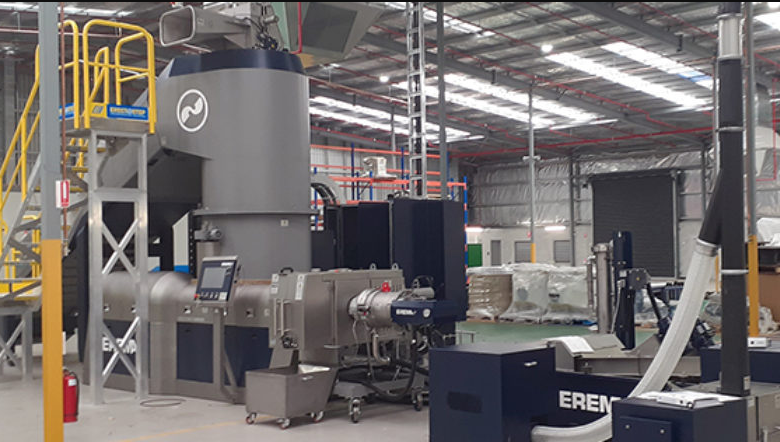EcoCycle Innovations: High-Performance Recycling Equipment

Recycling has come a long way since its early days when items were simply thrown into the recycling bin with little to no thought about what would happen to them next. Today, there is a variety of recycling equipment available that can help to maximize efficiency and minimize environmental impact.
The first step in choosing the right recycling equipment is to understand the different types of equipment available and what each one is best suited for. There are three main categories of recycling equipment: collection, sorting, and processing.
Collection equipment includes items such as bins, carts, and trucks that are used to collect recyclable materials from homes and businesses. This type of equipment is essential for keeping recyclables out of the landfill.
Sorting equipment helps to sort recyclables by material type so that they can be properly processed. This type of equipment includes sorting tables and conveyor belts. Processing equipment is used to turn recyclables into new products. This type of equipment includes balers and crushers.
Benefits of Using Cutting-Edge Recycling Equipment;
The benefits of using cutting-edge recycling equipment are many and varied. Perhaps the most important benefit is that it can help to drastically reduce the amount of waste that is produced each year. This, in turn, can help to minimize the environmental impact of waste disposal and help to preserve our natural resources.
Another important benefit of using cutting-edge recycling equipment is that it can help to increase the efficiency of recycling operations. This means that more materials can be recycled in a shorter period of time, which can save both money and energy.
Using cutting-edge recycling equipment can also help to create jobs in the recycling industry. By investing in new technologies, recyclers can create new and innovative ways to process materials, which can lead to new employment opportunities.
Cost Savings from Utilizing Advanced Recycling Equipment;
In order to maximize efficiency and minimize environmental impact, it is important to utilize advanced recycling equipment. One way to do this is by using automated sorting systems. Automated sorting systems can sort recyclables by material type, which helps to increase the overall recycling rate. Additionally, these systems can also reduce the amount of time needed to sort recyclables manually.
Another way to reduce the environmental impact of recycling is by using energy-efficient equipment. For example, some recycling facilities use balers that compress recyclable materials into bales. These bales take up less space than loose materials, which reduces transportation costs and emissions. Additionally, some balers use electricity instead of hydraulics, which further reduces emissions.
Utilizing advanced recycling equipment can help to maximize efficiency and minimize environmental Impact. Automated sorting systems can improve the overall recycling rate, while energy-efficient equipment can reduce emissions from transportation and operations.
Environmental Impact of Different Types of Recycling Equipment;
Different types of recycling equipment have different environmental impacts. Some recyclers use more energy-efficient equipment that has a lower carbon footprint. Others use less efficient equipment that emits more greenhouse gases.
The most energy-efficient type of recycling equipment is the closed-loop system. This type of system captures the recycled material and reprocesses it back into new products without emitting any pollutants. Closed-loop systems are typically used by large commercial recyclers who have the financial resources to invest in this cutting-edge technology.
Less energy-efficient types of recycling equipment include open-loop systems and batch processes. Open-loop systems emit pollutants when they recycle materials back into new products. Batch processes are less efficient than closed-loop systems and also emit pollutants during the recycling process.
Impact on Waste Management and Processing Facilities;
The amount of waste produced by businesses and households has increased significantly over the years. As a result, waste management and processing facilities have had to adapt to accommodate the increased volume of waste. One way that these facilities have been able to do this is by investing in cutting-edge recycling equipment.
This equipment helps to maximize efficiency and minimize environmental impact by reducing the amount of waste that needs to be sent to landfill sites. It also allows for the reuse of materials that would otherwise be considered waste. This has a number of benefits for both businesses and the environment.
It is important for businesses to invest in recycling equipment not only to help reduce their environmental impact but also to improve their bottom line. By reusing materials, businesses can save money on purchasing new raw materials. They can also save on disposal costs associated with sending waste to landfill sites.
In addition to benefiting businesses, cutting-edge recycling equipment also benefits the environment. Reducing the amount of waste sent to landfill sites, it helps to reduce greenhouse gas emissions and other pollution associated with these sites. It also helps conserve natural resources by allowing for the reuse of materials that would otherwise be considered waste.
How Companies Can Maximize Efficiency with Recycling Equipment?
In order to maximize efficiency, companies need to invest in cutting-edge recycling equipment. This will enable them to recycle more materials and reduce their environmental impact.
There are a number of different types of recycling equipment available on the market, so it is important to choose the right one for your company’s needs. You should also consider the cost of the equipment and the maintenance required.Some of the most popular types of recycling equipment include:
1. Balers: Balers are used to compress recyclable materials, making them easier to store and transport. They can be used for a variety of materials, including paper, plastic, and metal.
2. Compactors: Compactors are used to reduce the size of recyclable materials, making them easier to store and transport. They can be used for a variety of materials, including paper, plastic, and metal.
3. Shredders: Shredders are used to destroy recyclable materials so that they can be recycled into new products. This is an important step in the recycling process as it ensures that materials are not contaminated with other waste products.
4. Sorters: Sorters are used to sort recyclable materials so that they can be recycled into new products. This is an important step in the recycling process as it helps to ensure that materials are not contaminated with other waste products.
Conclusion;
Recycling equipment is a great way to maximize efficiency and minimize environmental impact. With the right technology, you can save money, reduce waste, and help the environment at the same time. Investing in advanced recycling equipment is not only beneficial for businesses but also for society as a whole. It’s an investment that will pay off in both financial savings and sustainability in years to come.




